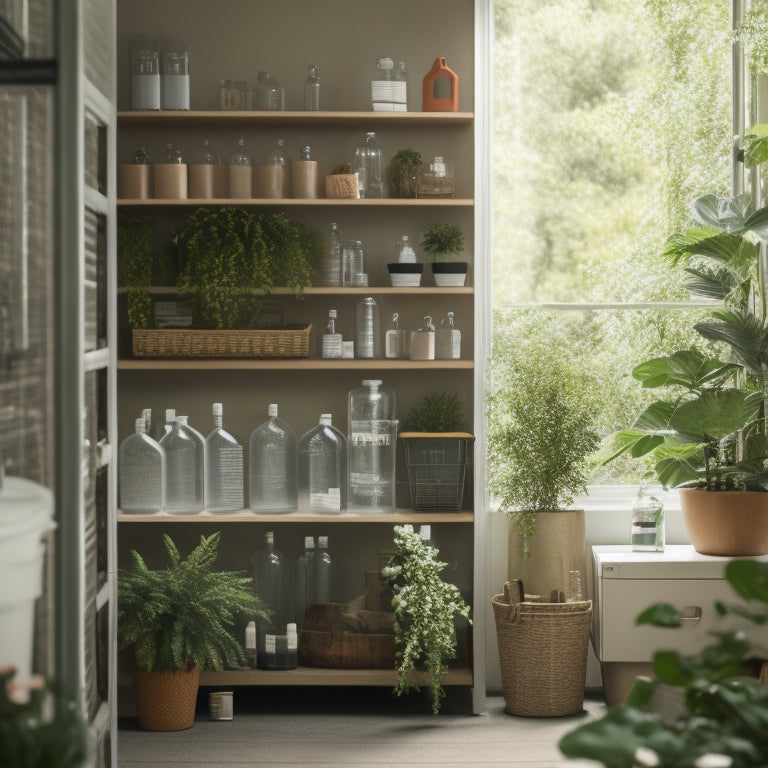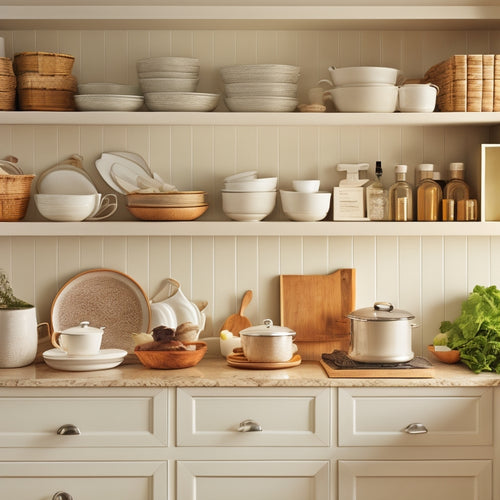
Emergency Water Supply: Tips for Safe Storage
Share
To guarantee a safe and reliable emergency water supply, follow established guidelines for storage and maintenance. Start by calculating your water needs, aiming for at least one gallon per person per day for a minimum of two weeks. Select suitable, food-grade containers with tight-closing tops, and clean and sanitize them properly before use. Store water in a cool, dark place, away from toxic substances, and maintain its quality by rotating the supply every six months. By following these steps, you can rest assured of a dependable emergency water supply. Further attention to detail can further guarantee the integrity of your stored water.
Key Takeaways
• Store at least one gallon of water per person per day for a minimum of two weeks, considering extra for specific needs.
• Choose food-grade water storage containers with tight-closing tops, made from durable materials like HDPE or PET.
• Clean and sanitize containers with a bleach solution, ensuring all surfaces contact the solution, before air-drying and filling.
• Store water in a cool, dark place away from direct sunlight and toxic substances, using clean scoops to avoid contamination.
• Rotate stored water every six months, monitoring levels and inspecting for signs of contamination to maintain water quality and safety.
Creating Your Emergency Supply
When preparing for emergencies, one crucial aspect of creating a thorough emergency kit is establishing a dependable emergency water supply that meets the unique needs of each individual in the household.
This supply should include at least one gallon of water per person per day for drinking and sanitation, with a minimum two-week supply recommended. Consider extra water for specific needs like pregnancy or hot climates.
For water purification, follow CDC instructions to make water safe to drink. Additionally, store unscented liquid household chlorine bleach for disinfection and cleaning.
Selecting the Right Container
Once the decision has been made to establish an emergency water supply, attention turns to selecting a suitable container to store this important resource. When it comes to container options, a buying guide can be helpful in navigating the numerous choices available. Food-grade water storage containers with tight-closing tops are a necessity.
Durable, unbreakable materials like HDPE or PET are ideal, and narrow openings for pouring are a bonus. Size considerations are also vital, as you'll want to make sure you have enough storage capacity to meet your needs. A general rule of thumb is to have at least one gallon per person per day for drinking and sanitation.
Cleaning and Sanitizing Containers
Proper cleaning and sanitizing of containers are essential steps in preparing a safe and reliable emergency water supply. This critical process eliminates any contaminants that may be present, guaranteeing the water stored is safe for consumption.
To effectively clean and sanitize your containers, follow these steps:
- Wash the containers with soap and rinse thoroughly to remove any debris.
- Mix 1 tablespoon of unscented liquid household chlorine bleach with 1 gallon of water to create a sanitizing solution.
- Ensure all surfaces of the container come into contact with the sanitizing solution, then air-dry before use.
For those looking for eco-friendly options, consider using bleach alternatives like hydrogen peroxide or vinegar-based disinfection techniques. Additionally, opt for reusable containers to reduce waste and minimize environmental impact.
Storing Water Safely and Correctly
In a cool, dark place away from direct sunlight, store your emergency water supply to prevent degradation and contamination. This guarantees the water remains safe for consumption and maintains its quality.
Remember, emergency preparedness is essential, and storing water correctly is a vital aspect of it. When storing, keep the water away from toxic substances and use clean scoops to avoid contamination.
Don't touch the water or container with your hands, as this can introduce bacteria and compromise water purification efforts. By following these guidelines, you'll be well-prepared for any emergency situation, and your stored water will be safe to drink.
Maintaining Your Water Supply
Regular rotation and inspection of stored water are essential to guaranteeing the long-term safety and quality of the emergency water supply. This proactive approach helps prevent contamination and assures the water remains potable.
To maintain your water supply, follow these guidelines:
-
Rotate your supply: Replace stored water every six months to prevent stagnation and contamination.
-
Monitor levels: Keep track of your water usage and replenish your supply as needed, especially during emergency situations.
-
Inspect for signs of contamination: Regularly check your stored water for signs of contamination, such as unusual odors, colors, or sediment.
Frequently Asked Questions
Can I Use a Water Filtration System Instead of Bottled Water?
When considering a water filtration system as an alternative to bottled water, it is vital to prioritize water quality and filter maintenance. Make sure the system is designed to remove contaminants and pathogens, and regularly replace filters according to the manufacturer's instructions. Proper maintenance is important to guarantee the system's effectiveness in providing safe drinking water.
How Do I Calculate My Household's Emergency Water Needs?
Calculating your household's emergency water needs involves considering water rationing and family size. Start by determining the number of people in your household, including pets.
Aim to store at least 1 gallon per person per day for drinking, cooking, and hygiene. For a 2-week supply, multiply this amount by 14.
Consider additional needs, such as pregnancy or hot climates, and adjust accordingly. This will give you a thorough picture of your household's emergency water requirements.
Can I Store Emergency Water in My Basement or Garage?
The basement or garage - a perfect storm of moisture concerns and pests attractants. Imagine your precious emergency water supply festering in the damp, dark recesses of your basement, or worse, becoming a fly-infested oasis in your garage.
Alas, these areas are not ideal for storing emergency water. Instead, opt for a cool, dry space away from direct sunlight and toxic substances, ensuring your water remains safe and uncontaminated.
Is It Safe to Use Old Milk Jugs for Storing Emergency Water?
When repurposing old milk jugs for emergency water storage, it is crucial to take into account the container material. Milk jugs are typically made of HDPE (high-density polyethylene), which is not ideal for storing water long-term. HDPE can leach chemicals into the water, compromising its safety.
Instead, opt for food-grade water storage containers made of durable, non-toxic materials like BPA-free plastic or stainless steel.
Can I Add Water Preservatives to Extend the Storage Duration?
The age-old quest for eternal water freshness!
Can we really add water preservatives to extend storage duration? The answer is a resounding 'maybe.'
While water purification tablets can be effective, chlorine alternatives like iodine or ozone generators might be more suitable for long-term storage.
However, it's important to mention that these methods may not be suitable for all situations, and proper testing is essential to guarantee water safety.
Related Posts
-

Why Kitchen Cabinet Organization Matters Most
You're likely losing more than just time and ingredients when you can't find what you need in your kitchen cabinets -...
